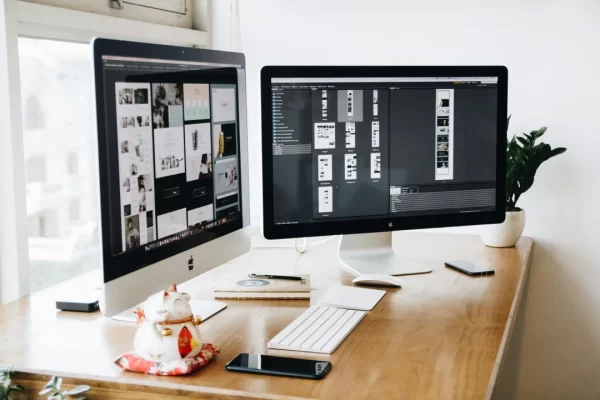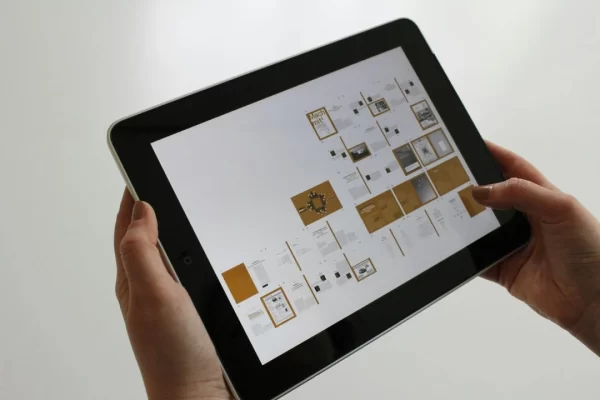Website templates are one of the easiest and most efficient ways to create a professional-looking website — without writing a single line of code. In this guide, we’ll explore everything you need to know about website templates: what they are, how they work, what to look for, and how to choose the right one for your project.
Key Takeaways
- Website templates are pre-made designs that simplify web development.
- Ideal for beginners and businesses alike, they reduce time and cost.
- Templates offer modular design, responsive layouts, and built-in functionality.
- You can choose from free or paid options, depending on your needs and budget.
- Selecting the right template means considering design, flexibility, and features.
- Templates support modern design practices, including mobile responsiveness and CMS integration.
Table of Contents
- Key Takeaways
- What Are Website Templates?
- How Website Templates Work
- Modularity in Website Templates
- What’s Included in Website Templates?
- How Are Website Templates Created?
- How to Choose the Right Website Template
- Free vs Paid Website Templates
- Responsive and Adaptive Website Templates
- Understanding the Basic Layout of Website Templates
- FAQs About Website Templates
What Are Website Templates?
Website templates are pre-designed web pages or sets of HTML files that include layout, design elements, and placeholders for text and images. These templates make it easy for anyone — from beginners to developers — to create a website without starting from scratch.
Whether you’re a business owner, blogger, or creative professional, using a website template can drastically reduce the time and cost of launching a site. Templates are typically built using HTML and CSS, and many are compatible with popular CMS platforms like WordPress, Joomla, or Shopify.
How Website Templates Work
Website templates act as blueprints for building websites. They contain predefined structures for headers, footers, sidebars, and content sections, along with design rules for typography, spacing, and layout. You simply add your content, images, and branding — no technical skills needed.
These templates are especially popular among small businesses and freelancers who want a clean, professional look without hiring a web designer.
Modularity in Website Templates
What Does Modularity Mean in Website Templates?
Think of a website template like the exterior of a house. The structure (template) has windows (content areas) and doors (interactive elements) — and you can decorate the inside however you like.
Most templates are modular, meaning they are made up of discrete sections that can be easily rearranged or swapped. This is ideal for use with a CMS (Content Management System), where elements like product listings, blog posts, and galleries are managed separately and displayed dynamically.
Developers build these modules into the template’s code, allowing for seamless integration between content and design.
What’s Included in Website Templates?
Website templates often come packed with ready-to-use features such as:
- Text and image placeholders (.jpg, .png, .gif)
- CSS and JavaScript animations
- Contact and subscription forms
- Shopping carts and checkout pages
- Image galleries and video players
- Downloadable files (PDFs, documents)
- Social media integration
- Custom widgets and plugins
Depending on the provider, templates may vary in code quality, layout style, or included functionalities — so it’s important to evaluate a template carefully before using it.
How Are Website Templates Created?
Creating a high-quality website template involves several stages:
1. Research and Trend Analysis
Designers study UI/UX trends, user preferences, and industry needs before creating a new template.
2. Wireframing and Prototyping
Templates start as low-fidelity mockups, which evolve into high-fidelity prototypes with detailed layouts.
3. Visual Design
Once the layout is defined, designers create the template’s visual identity— including typography, colors, and imagery.
4. Front-End Coding
Using HTML, CSS, and JavaScript, developers bring the design to life, making sure it’s responsive and browser-compatible.
5. Back-End Integration
Templates are often paired with CMS frameworks, allowing for content to be stored and served dynamically.
6. Quality Assurance
Before launch, templates go through rigorous testing to ensure they are fast, secure, and fully functional across all devices.
How to Choose the Right Website Template
Choosing the best template depends on your goals:
- Define Your Purpose: Are you launching a blog, portfolio, business site, or eCommerce store?
- Analyze Competitors: Explore similar websites for inspiration and see what works in your niche.
- Evaluate Features: Look for SEO tools, form builders, mobile responsiveness, and plugin compatibility.
- Check Customization Options: Make sure the template allows for the level of personalization you need.
Free vs Paid Website Templates
When to Choose Free Website Templates
- Budget is limited
- You’re testing ideas or creating temporary pages
- You need a basic website without advanced functionality
When to Invest in Paid Website Templates
- You want premium features or unique design
- Support and regular updates are important
- You need advanced integrations or niche layouts
Free templates are great for getting started, but paid templates often offer better flexibility, support, and performance.
Responsive and Adaptive Website Templates
Modern users access websites from a variety of devices — desktops, smartphones, tablets, and everything in between. A responsive website template ensures your site:
- Adapts to different screen sizes
- Offers a consistent experience across devices
- Improves SEO and user satisfaction
Responsive design is a must in today’s mobile-first digital environment, and nearly all modern website templates come with responsive layouts out of the box.
Understanding the Basic Layout of Website Templates
Most website templates follow a familiar structure that improves usability:
Header
- Located at the top of the page, the header typically includes:
- Navigation menu
- Logo
- Contact info or CTA button
Body
- The main content area that varies from page to page. This is where blogs, galleries, products, and articles live.
Footer
At the bottom of the page, the footer often includes:
- Copyright notices
- Social links
- Email signup forms
- Quick navigation
With a website template, each section is customizable — allowing you to tailor the layout to your brand and user experience.
FAQs About Website Templates
What are the benefits of using a website template?
They save time, reduce development costs, and allow non-coders to launch professional websites quickly.
Can I customize a website template?
Absolutely! Most templates are fully customisable — you can change text, images, layout, colors, fonts, and more.
Are website templates SEO-friendly?
Many templates are designed with SEO in mind, especially those optimized for mobile and fast loading speeds. However, always check for best practices like clean code and metadata support.
Do I need coding skills to use a website template?
Not necessarily. Many templates are drag-and-drop or compatible with website builders like WordPress, Wix, or Squarespace.
What’s the difference between a responsive and non-responsive template?
A responsive template adjusts to different screen sizes, while a non-responsive one may display poorly on mobile devices.
Ready to Build Your Website?
If you want a fully customized website that combines the power of design and SEO, our Melbourne-based team at Digital Rescue can help. We create tailored, lead-generating websites designed to grow your business online.
When you’re ready to commence with your website development project, tapping a Melbourne web design agency to create visually appealing, SEO-friendly websites from scratch is a good call. Contact us at Digital Rescue as we use over a decade of industry experience and a deep understanding of design trends to develop brand websites specially made to generate leads and increase conversions.



